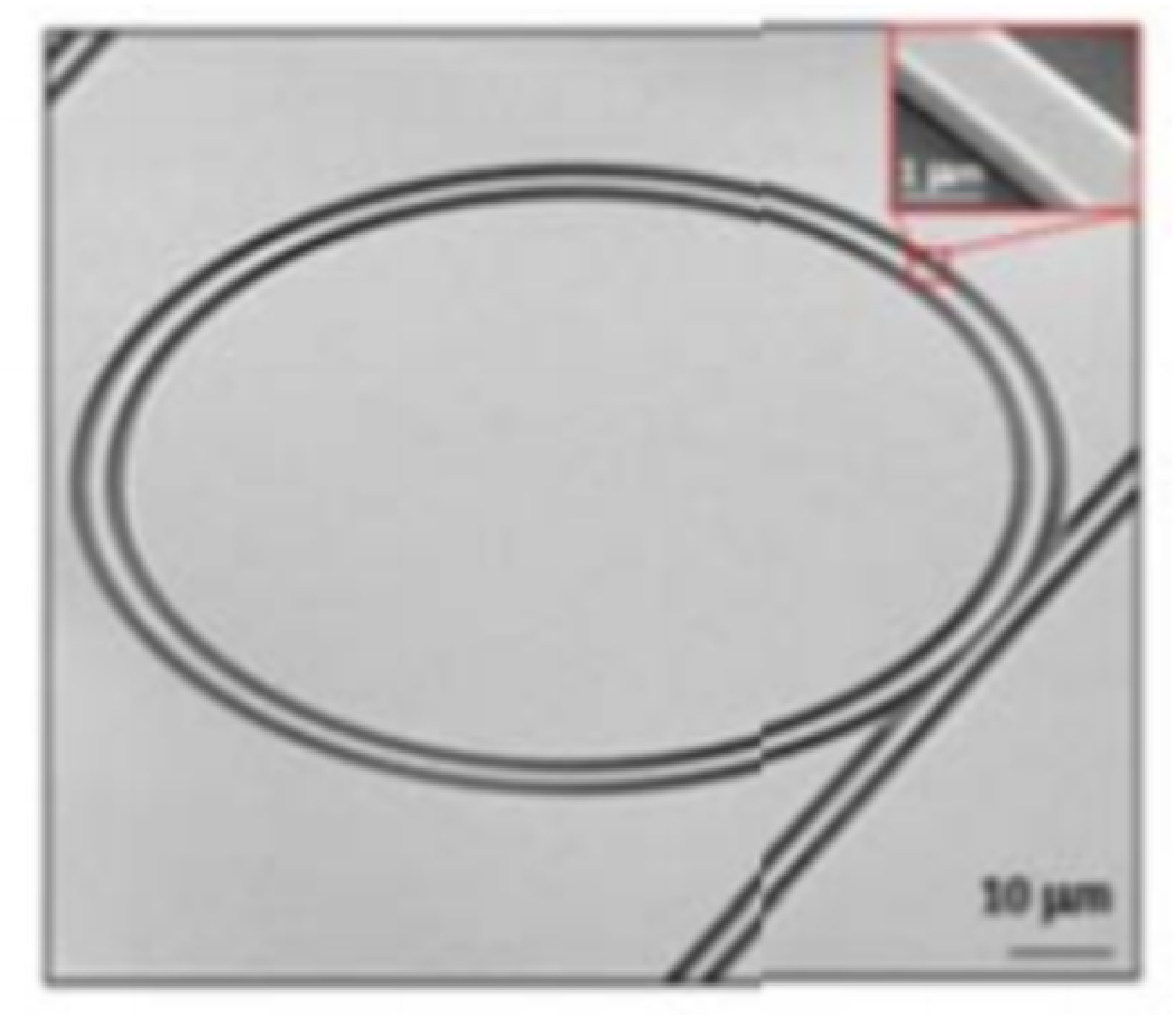Tantala ring resonator and method for fabricating nonlinear photonic devices

Technology
The invention is a method and process to create integrated nonlinear photonics, using the material tantalum pentoxide (Ta2O5, also known as tantala). CU researchers deposit tantala material on oxidized silicon wafers, and then fabricate integrated nonlinear photonics devices, using standard semiconductor processing techniques.
Figure 1: Scanning electron microscope image of an air-clad tantala microresonator for frequency-comb generation.
Advantages
- Low optical losses to enable efficient nonlinear photonics processes
- Low tensile stress for high yield in nanofabrication
- Low thermal processing temperature to maintain compatibility for co-integration with other integrated photonics materials
Metrics of Tantala Material
- Nonlinear coefficient = 6.2 x 10-19 m2/W
- Transparency range = 320 nm – 8000 nm
- Material Stress = 38 Mpa
- Thermo-optic coefficient = 8.8 x 10-6/K
- Maximum Resonator Q = 3.8 x 106
Applications
- Precision Metrology
- Microresonator Frequency Comb Generation
- Optical Signal Generation and Processing
- High Speed Data Communications
- Sensing, Positioning, and Navigation
- Quantum Computing
What's Next?
CU Boulder and National Institute for Standards in Technology (NIST) researchers will continue to refine and improve the existing technology. This is a promising technology that is ready for licensing. We are currently looking for industry partners to commercialize this variable and robust technology.
Nicole Forsberg: nicole.forsberg@colorado.edu
The Newsroom
For marketing and communication inquiries or news tips, contact Daniel Leonard, senior marketing and communications specialist for Venture Partners at CU Boulder.
For media inquiries, please visit colorado.edu/news/formedia.


